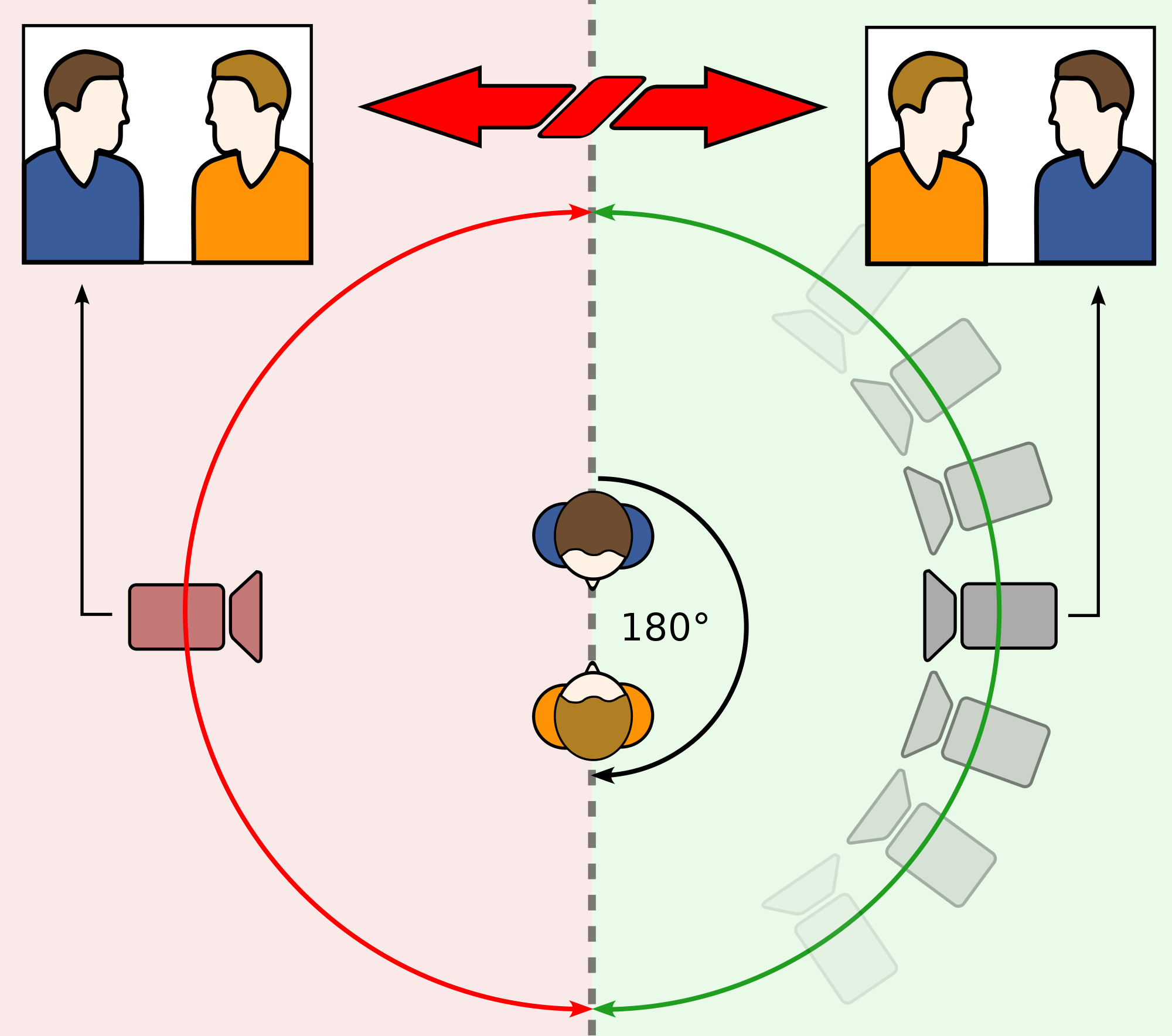
What Are the Rules of Video Editing?
There are many rules of video editing, but we’ve narrowed it down to the top 10 that every video editor should follow.
1) Don’t Jump
Jumping occurs when consecutive shots of one subject change point of view. Beware if you are editing an interview, make sure to put in some b-roll in between shots of the interviewee when you cut out some of their dialogue. Otherwise, the video becomes very jarring for the audience.
2) Cut on Motion
This means that when changing from one shot to another, you as the editor should always try to cut from motion in the first shot. This makes the scene much smoother. Imagine the difference between cutting from a still train to an opening train door as opposed to a moving train cutting to an opening train door. The latter was much smoother.
3) Cut on Similar Elements
Cutting on motion and cutting on similar elements are great techniques for changing shots or scenes. Cutting on similar elements refers to cutting from similar looking objects or scenes between consecutive shots. For example, cutting from flowers in a garden to flowers in someone’s hair, cutting from one blue sky to the next, or cutting from a fan to helicopter blades. The focus of the shots doesn’t have to be the same, simply they must look alike.
4) Wipe
Wipes occur when the frame fills up with one element such as a person walking in front of the camera. Believe it or not, this can be a helpful transition between shots because it is not a clashing change for the audience.
5) Match the Scene
A wonderful part of editing is that footage can be taken from separate times and put together to make a congruent scene. In order to make this congruent scene, you as the editor must match the scene’s setting, motion, and elements. To match the setting, you could take footage from the park from a month ago and pair it with footage taken the day before. To match motion, for example, if the subject was running from the left of the frame to the right, then the subject should reenter the frame on the left. To match the elements, imagine the footage from a month ago was a man walking in the part with a briefcase and a suit. The footage from the day before must have the man dressed in the same clothes with the same briefcase in his hands.
6) B-Roll
Say you can’t match the scene or your footage is getting jumpy. That’s when inputting b-roll is very helpful. Always try to place b-roll in between shots that jump or don’t match the scene in order to minimize a jarring effect on the audience. B-roll is also helpful when breaking up a long and nondynamic scene.
7) 45*
If your scene utilizes multiple camera angles, you should always try to use shots that change the view on the subject by at least 45 degrees. This helps avoid a jumping effect.
8) Stay on 1 Plane & 180* Rule
Draw a line where your subject is. Imagine that is the X axis on a coordinate plane. You never want to cross that X axis because it would mess with the natural perspective for the audience.

9) Change Focal Lengths
Changing the focal lengths of your shots is helpful when shooting the same subject for extended periods of time: like at a wedding or an interview. If you have close up shots and wide shots, you as the editor can avoid jump cuts and also put certain shots out of order or shorten footage without it being noticeable.
10) Motivate your Shots
Make sure that every edit and every cut had a reason to be changed. You should always have a reason for switching from camera angle or shot to another. In a perfect world, that motivation will always be to enhance the production’s storytelling ability.
When Can You BREAK the Rules of Video Editing?
It’s not often that you should break these 10 rules of video editing, but here we will discuss some opportunities to break them.
When you can break the rules of video editing 1-10:
- Honestly, never break this rule of editing unless you want to make your productions look amateur.
- Only break if you have B-Roll
- Only break if you have B-Roll
- Only break if you have B-Roll
- Only break if you have B-Roll
- The B-Roll rule of video editing should never be broken because, in essence, it is the rule that breaks the other rules. At its core, this rule is your last result when you cannot fulfill the requirements of the other 9 rules.
- Only break if you have B-Roll.
- There are 2 times you can cross your X axis: 1) When using a moving shot to cross the axis of action 2) You actually indicate on the screen that you are crossing the axis of action and the shot is a reverse angle. This is commonly done during sporting events.
- Only break this rule of video editing if you have B-Roll
- Occasionally, your motivation for transitioning shots will be based on an inconvenience that happened during shooting such as someone walking in front of the camera (which is helpful for wiping) or you bumped your camera to make it shake.
As you can see, the major excuse to break the majority of these rules is to use B-Roll, and even then, it is more of a last resort option. Also, B-Roll itself is a rule that states almost nearly that you use this rule to break other rules when there is not enough footage to make a scene congruent.
As you learned from the Common Video Vocabulary blog post, a B-Roll is supplemental or alternative footage used to break up a scene. Breaking up the footage can be helpful to make a scene more visually interesting as well as for hiding discrepancies in the preceding and following clips.
Of course, you may also break the rules of video editing when you want to mess with the members of your audience’s minds. For instance, jumping to different shots is often used in fight scenes. Jumping makes the scenes look more intense, fast paced, and dangerous. It also helps to hide the fake punches the actors throw at each other. 🙂
Next time you watch any video or production, watch out for editors who have followed these rules, and editors who have broken them.
Check out the top 30 video editing terms you should know whether you are a professional or you are just beginning.
Up Next!
In the next Intro to Video Editing blog post, we will be discussing video editing software. That includes which software to use as well as how to use the different programs.
We here at NewBlueFX hoped you enjoyed this article and found it helpful! Please leave comments below about rules you found helpful or rules we left out!
This is part of the Intro to Video Editing blog series. To learn more, select the “Intro to Video Editing” category and find more articles like this one!
